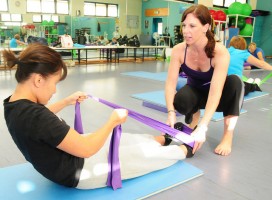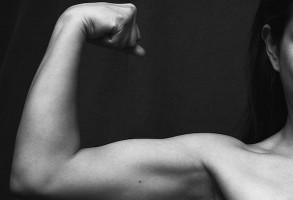The way that a dancer carries his/her head, the length of the neck, and the position of the chin, are pivotal to the overall appearance of grace and poise so necessary in dance. Understand the cervical spine and how it functions to project self-confidence, and improve common mistakes in cambré and carriage of the head.
Health, Wellness & The Dancer's Body
Dancesolutions 2011
Art Intercepts’ Lauren Warnecke is taking some of your dancesolutions head on this year. You’ve expressed a desire to improve your technique, avoid injury, and increase flexibility. Look for tips and solutions to help you achieve your goals. Here is a sneak peek and a chance to let Lauren know what you’d like to see covered.
Dancer Fitness: Knowledge, Assessment, and Resources
Four important dance fitness components, assessment, injury considerations for young teens, plus links and resources on dance science, health, and wellness for dancers.
The Nutcracker At It’s Corps With Apprentice, Madison Morris
Houston Ballet apprentice, Madison Morris answers questions about what it’s like to perform in the corps during this busy holiday season. She reveals both the hard work and dedication required of apprentices and the corps and an insider’s view of the sometimes action-packed events going on behind the scenes at Nutcracker performances.
Improving The Fitness Of Your Dancers
Generally we think of dancers as being physically fit, but today most of us in the dance field recognize that there are ‘holes’ in typical dance training. Technique classes alone are not enough for the demands of present-day choreography.
Life Lessons on Injury: Arriving at Plan C
“Rarely do we stop to consider the idea of not dancing, or having a plan B if it doesn’t work out. I always considered myself a careful dancer, if not a rational one. I am meticulous about technique and proper form to prevent the chance of injury, but when the occasional sprained ankle or ingrown toenail came up my instinct was always to dance through it, or “walk it off”, as the saying goes.”





